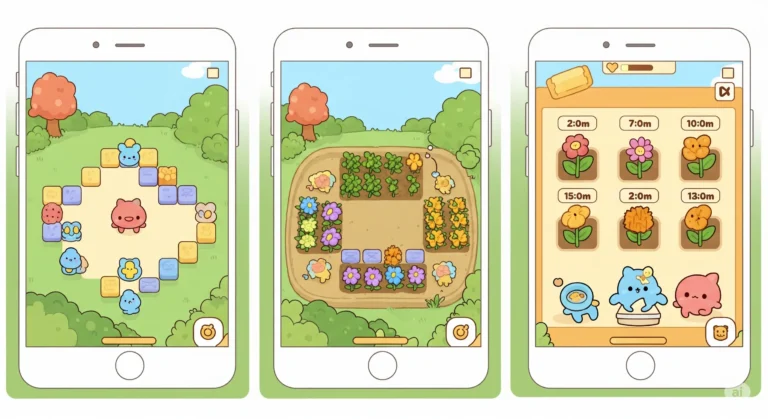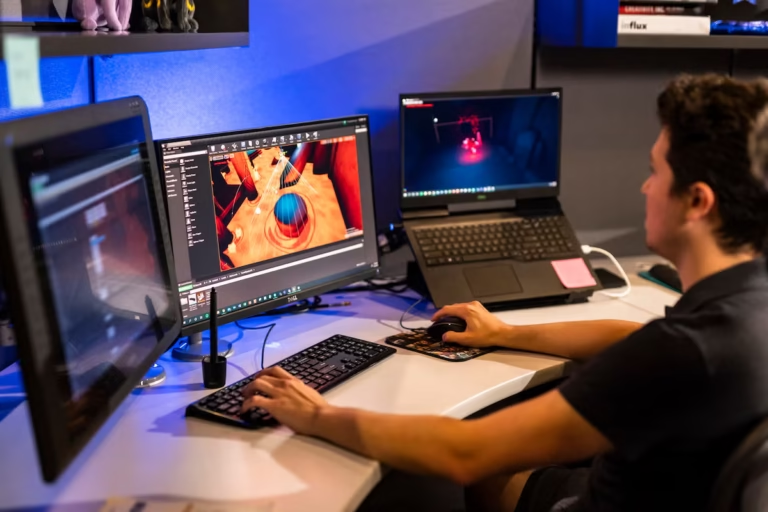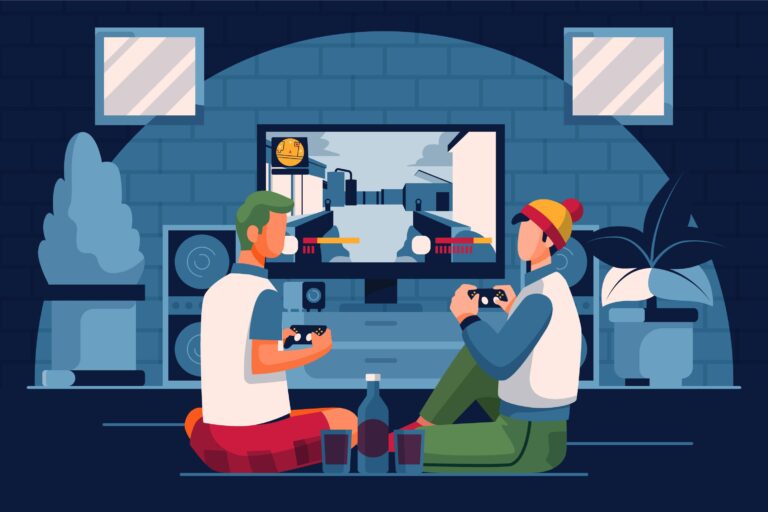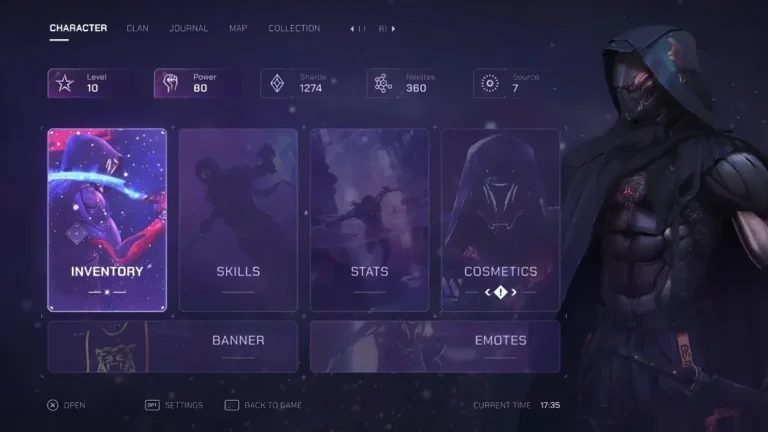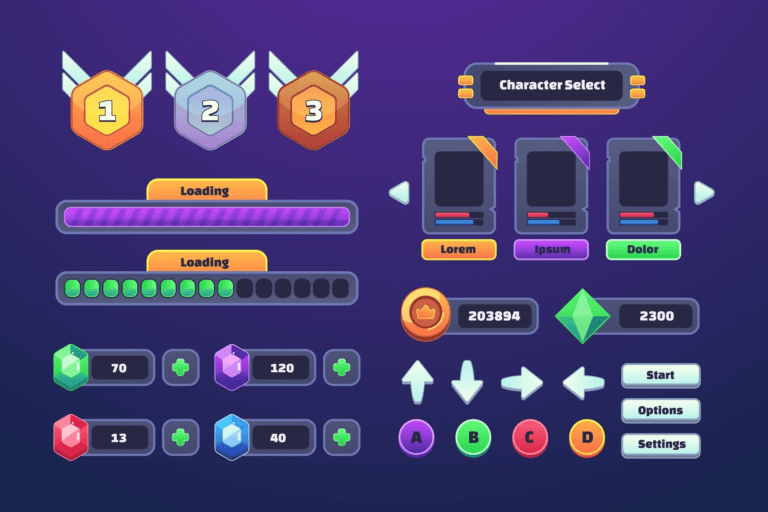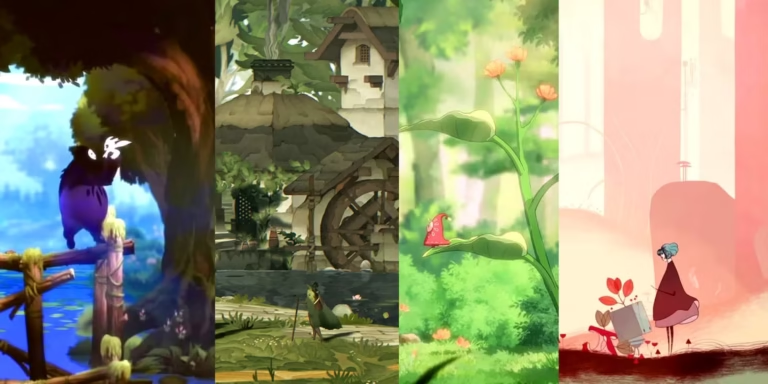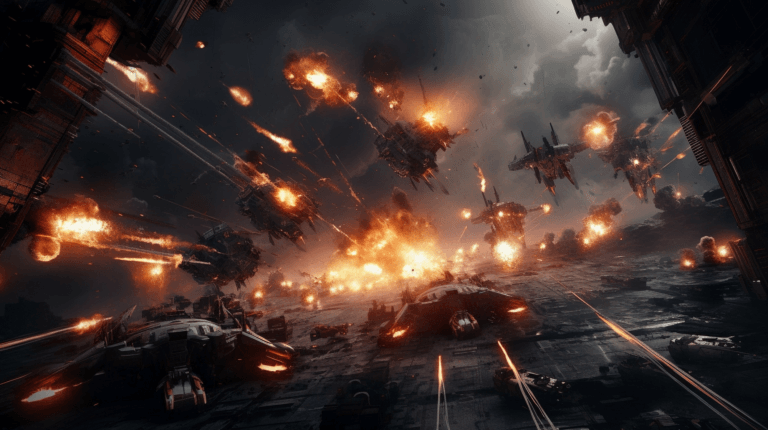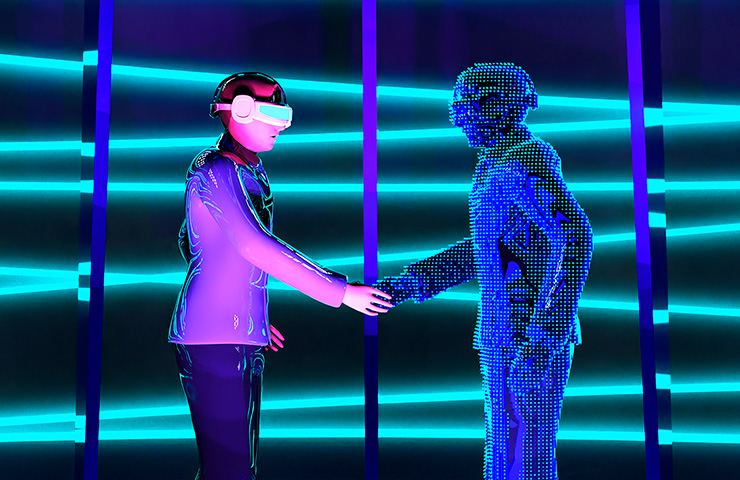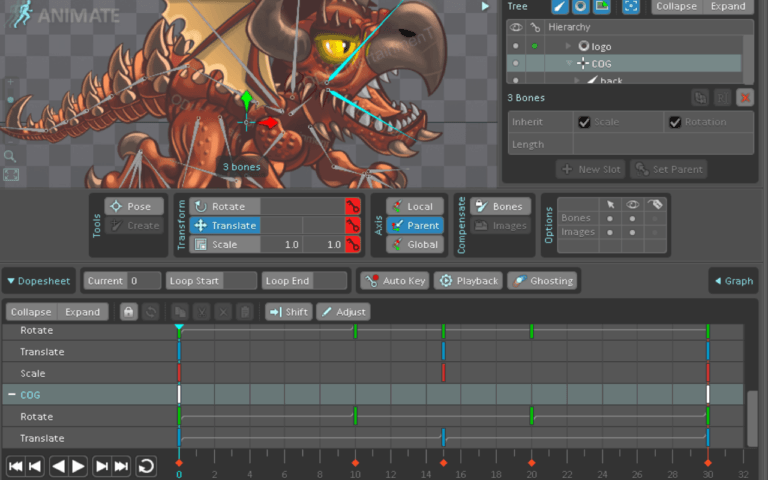Today, we will discuss the stylized art style, which refers to artwork that has been altered from a realistic representation to convey a particular style or aesthetic. The stylized art style is a form of artistic expression that deliberately exaggerates or simplifies aspects of reality to create a unique and recognizable look. They can involve simplifying shapes, exaggerating features, or using non-naturalistic colors to create a specific mood or atmosphere.
Stylized art can be found in various mediums, including painting, graphic design, games, and animation, and is often used in commercial and entertainment industries to create a unique and recognizable brand or visual identity.
In this article, we will discuss the origins of the Stylized art style, how it has translated into games and what is the meaning when we call the art style of a game “Stylized”, what are the borders of this art style, and how game publishers use it to their benefit.


Need Game Art Services?
Visit our Game Art Service page to see how we can help bring your ideas to life!
I- What is Stylized Art?
Stylized art refers to graphics that use exaggerated, non-realistic shapes, proportions, colors, and features to create a unique visual style. Rather than accurately depicting real-world objects, environments, and characters, stylized art aims to develop appealing graphics not bound by realism creatively.
This art style often has a hand-drawn, comic book, or cartoon-like aesthetic when it comes to games and animations. Stylized graphics tend to simplify details, use bold outlines, employ flat cell shading, and depict imaginative subject matter to realize artistic visions unconstrained.
Although, at its core, stylized art style does simplify shapes and proportions, it doesn’t necessarily mean that it’s the sort of style that is easily created. You have to have a deep understanding of the borders of a matter in order to go beyond the boundaries. For example, you need to have a deep understanding of the human figure and joint placement in order to exaggerate it. When it comes down to this principle, stylized and cartoony art styles share common grounds. If you are interested in other genres of games, you can read more Here.
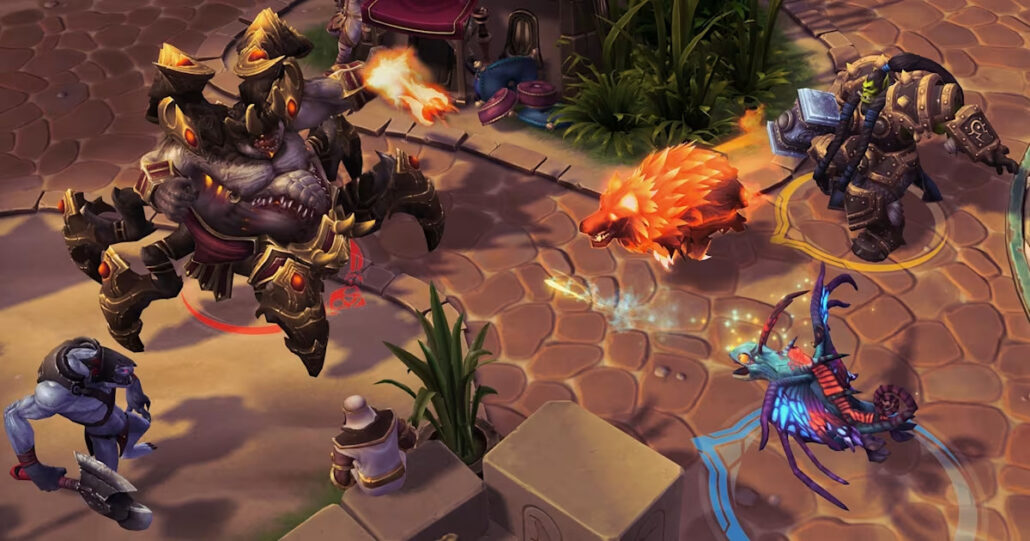
II- Benefits of Games
Stylized graphics have become hugely popular in games over the past decade rather than strictly realistic visuals. One of the first games that really glorified stylized art style is World of Warcraft with Warcraft I, which went on to be one of the greatest series among stylized games. There are several reasons this art style has taken off in gaming:
Iconic Look: The exaggerated shapes and features create graphics that are more visually striking, eye-catching, and memorable. This gives games their own distinct identity. The fantasy art style is nothing new, but when it comes to games, the sort of shading, coloring, proportion, and is a branch of fantasy style that makes stylized games unique.
Artistic Longevity: While realistic graphics often end up looking dated as technology improves, stylized graphics hold up over time due to their timeless look. The nostalgic charm of early stylized games persists rather than looking primitive.
Accessibility: The simplified style is easier and faster to animate and render, which helps smaller indie studios with limited resources find success through strong stylized aesthetics. Textures, lighting, and polygons don’t need to be as complex.
Tone Setting: Stylized visuals often support lighthearted, whimsical, storybook, or fantasy themes and tones in games. The graphics reinforce the desired mood and emotions. Each art style is suitable for a visual tone, although you can always go beyond the box.
Gameplay Support: Iconic character designs and environments are easier to read and control in gameplay, aiding mechanics and interactions. Distinct silhouettes stand out.
The simplified shapes, clean outlines, and exaggerated features typical of stylized graphics make objects, characters, and environments very clear and easy to read on screen. This visual clarity is extremely beneficial for actual gameplay mechanics and interactions.
III- Aspects of Stylized Art Style
III-I- Colors
Stylized games tend to use a limited and bold color palette rather than a full, realistic spectrum of colors. This creates a strong, unified aesthetic. Colors are often saturated and pushed to extremes rather than being muted or blended together realistically. High contrast is emphasized through complementary or clashing hues rather than gradually blended tones.
Softer pastel palettes may be used in more dreamlike or abstract styles as well. Neon palettes with fluorescent highlights are also common in futuristic settings. Overall, bolder, distinct colors increase graphic appeal and get amplified by other stylization techniques.
III-II- Proportions and Features
Characters and elements in stylized games often have exaggerated, distorted proportions and features. For instance, heads may be oversized, eyes enlarged, or certain parts like hands accentuated. This distortion is not aiming for realism but makes objects and characters more graphically appealing, eye-catching, memorable, and emotive. Increased proportions add emphasis and personality. Simple, rounded shapes are also very common.
Features and traits like being strong, intelligent, technician, stealthy, and many other traits can be shown by proportion more easily and exaggeration in stylized art style rather than realistic and hyper-realistic styles.
III-III- Textures and Details
A creative game art company creates a neat, stylized look that also streamlines rendering through clean and simple shapes without complex real-world textures or details. Smaller studios don’t have to devote resources to intricate textures and noise. Instead, elements will have smoothed-out details and minimal gradients. Bold black outlines are also frequently used to help characters stand out from backgrounds. Shadows tend to be soft and diffuse rather than having high-contrast sharp edges.
III-IV- Shading Approaches
Shading in stylized games tends to be flat and cell-shaded rather than realistic, subtle gradients. Large areas will have blocks of solid color instead of graduated lights and shadows. Few light sources are used, often with colorful, exaggerated rays. This enhances the hand-drawn and cartoon look. Softer shadows can create an impressionistic style. Overall, minimalist shading and effects keep the aesthetic clean rather than detailed texturing.
III-V- Animation Style
The exaggerated shapes and features allow for more dramatic animated movements and poses. Characters and elements can bend, stretch, and move in creative ways not bound by anatomy. Fast cartoon action is common. Cycles tend to be loopable. Secondary motion like hair, cloth, or squishing is minimized to focus on primary movements. Vibrant graphical effects enhance actions.
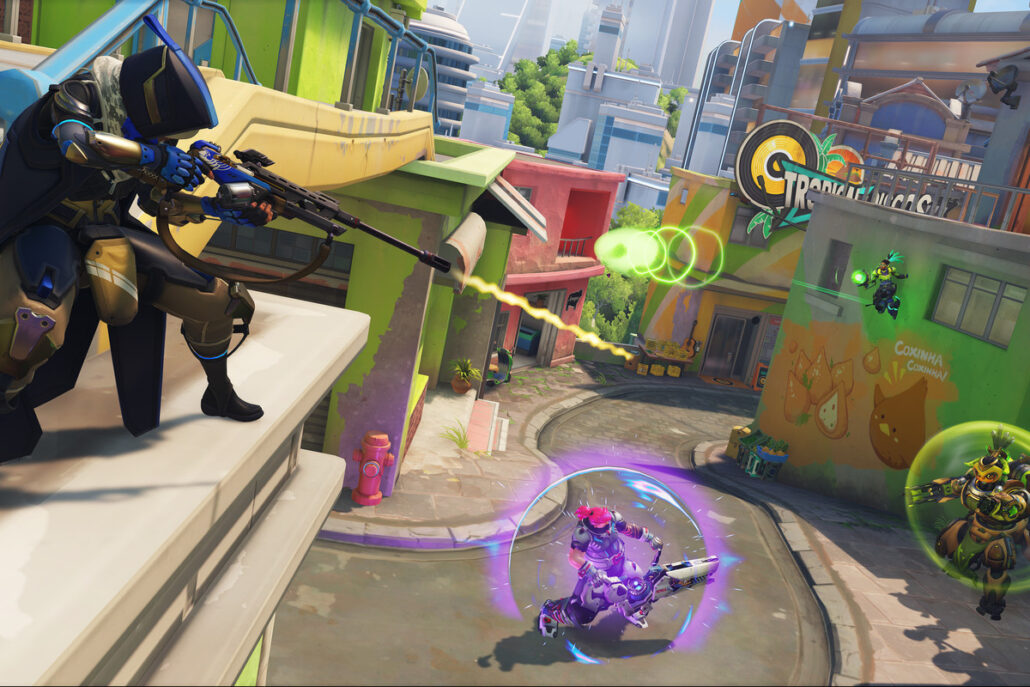
IV- Impacts on Gameplay and Experience
IV-I- Character Design
The exaggerated proportions, simplified details, and bold outlines of stylized characters make their silhouettes and movements very clear and easy to read. This significantly benefits gameplay mechanics and control responsiveness. Players can instantly recognize and connect to characters. Distinct, stylized character designs also help differentiate playable characters, enemies, and NPCs.
IV-II- Tone and Immersion
Stylized graphics often feel more personable, inviting, and relatable due to their hand-crafted imperfections and charm. This helps players emotionally invest in the world and characters. The unified artistic vision also creates a strong sense of place that pulls players into the experience, making it more immersive.
IV-III- Accessibility
The legibility and contrast of stylized graphics also benefit accessibility for players with visual impairments. Simplified environments are easier to navigate. Thick outlines and large shapes help with visibility issues.
IV-IV- Artistic Longevity
As mentioned earlier, the timeless aesthetic of stylized graphics prevents them from feeling as outdated as many games with more realistic graphics that age poorly due to technical limitations at the time. Stylized art maintains its nostalgic appeal and sentimental connections.
V- Examples of Stylized Games
V-I- World of Warcraft
World of Warcraft utilizes a vibrant, cartoonish art style with exaggerated armor, weapons, and proportions on characters. Heroes have large expressive eyes, visually symbolic gear, and flowing capes or details for added flair.
Stylized textures on buildings, creatures, and the environment reflect fantasy themes like wood, stone, metal, and nature. Strong complementary colors, rim lighting, and bold silhouettes make each class instantly recognizable on the battlefield. This accessible stylization helped popularize the MMORPG genre.
V-II- Overwatch
Overwatch’s extensive cast of heroes necessitated boldly unique character designs. Each hero has their own vibrant color scheme, silhouette, and creative stylization choices to stand out instantly.
From cowboy gunslingers to mech suits to futuristic soldiers, the imaginative game art styles directions bring these diverse personalities to life while unifying them visually. Environments also utilize exaggerated shapes and forms to optimize combat gameplay visuals. The result is a distinct, stylized look that achieved massive popularity.
V-III- The Legend of Zelda: Wind Waker
Wind Waker employs cell-shaded 3D graphics with thick outlines, endearingly big heads, and expressive eyes and faces to create an inviting, interactive storybook feel. This reinforces the adventurous and fantastical game world for an immersive experience.
Warm pastel colors provide a welcoming feel, while high-contrast dark outlines create a definition. Animation utilizes secondary motion, anticipation, and exaggeration for maximum charm that matches the gameplay. The result was a landmark achievement in stylized graphics and animation.
V-IV- Warhammer 40k: Dawn of War
The Warhammer 40k franchise is known for its signature dark gothic illustrated style. Dawn of War brought this stylized aesthetic into real-time 3D while remaining loyal to the IP.
Increased color saturation, contrast, and rim lighting emulate comic book visual intensity. Surfaces are textured with brush strokes, ink washes, and painterly lighting. Units and architecture feel hand-painted with exaggerated proportions, befitting the dystopian sci-fi universe. This successful translation of 2D art style to 3D art style helped pioneer grimdark stylization in games.
V-V- Sea of Thieves
Sea of Thieves uses a unified stylized aesthetic to facilitate its cooperative open-world pirate theme. The art utilizes softened lighting and bounced glow for gentle color cohesion. Strong character silhouettes enable clear communication and teamwork.
Painterly brush stroke textures on surfaces reinforce the romanticized nautical environments. Stylized waves, clouds, and shading evoke hand-painted art on an epic open-world canvas. This purposeful artistic presentation brought accessibility and charm.
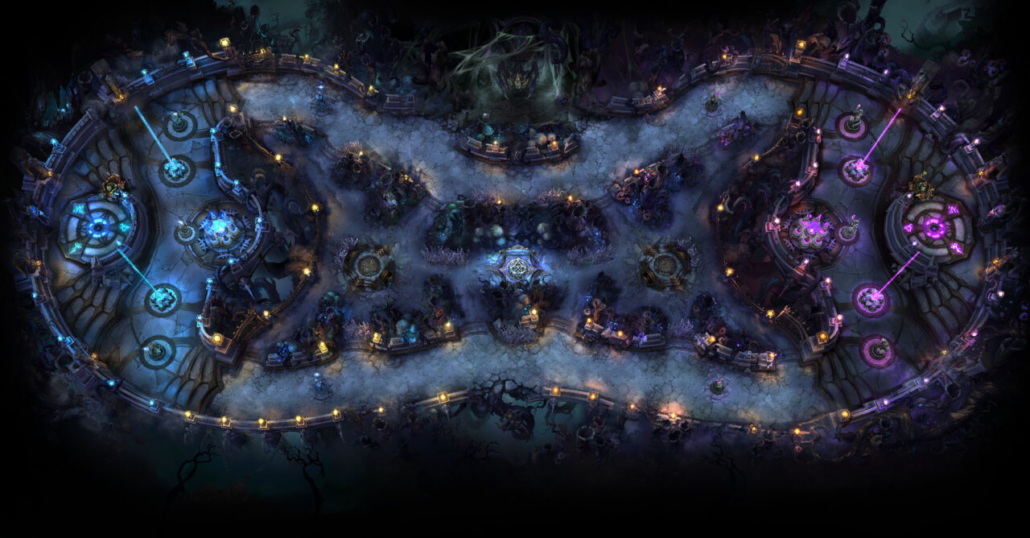
Conclusion
When done thoughtfully, stylized graphics can become an integral part of a game’s identity and greatly contribute to its success through artistic vision alone. The stylized aesthetic allows for more creative freedom for artists and animators as well. Overall, stylization has proven to be an excellent, flexible, and appealing approach to game art that connects with players. As games continue embracing a wide diversity of art styles, stylization helps set memorable games apart.
